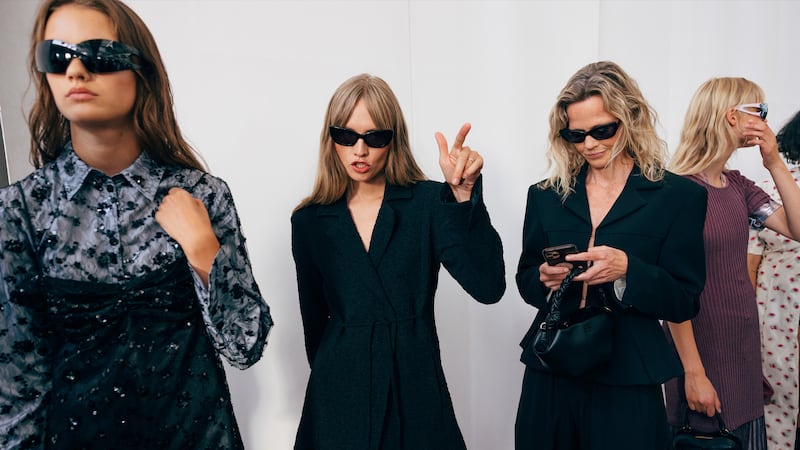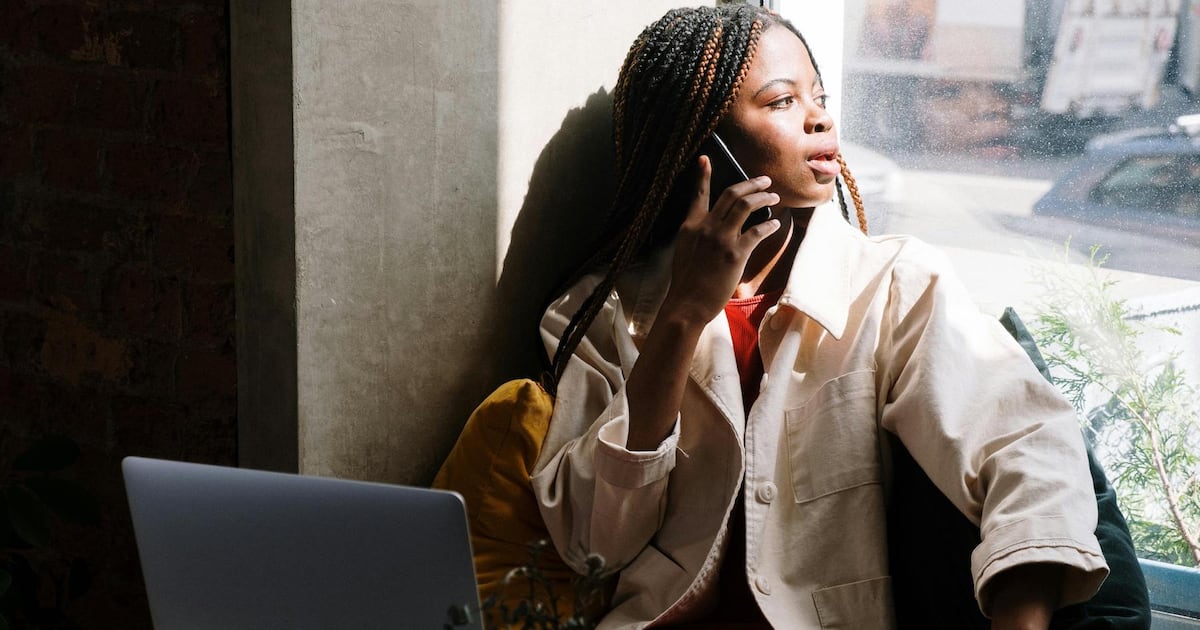Discover the most relevant industry news and insights for fashion PR & communications professionals, updated each month to enable you to excel in job interviews, promotion conversations or perform better in the workplace by increasing your market awareness and emulating market leaders.
BoF Careers distils business intelligence from across the breadth of our content â editorial briefings, newsletters, case studies, podcasts and events â to deliver key takeaways and learnings tailored to your job function, listed alongside a selection of the most exciting live jobs advertised by BoF Careers partners.
Key articles and need-to-know insights for PR & communications professionals today:
1. Indie Fragrance Brandsâ Big Athlete Opportunity

It isnât just his tenacity and grit on the field that Australian Football League star Isaac Quaynor takes pride in. âMy favourite thing for anyone to say ever [is], âYou smell goodâ,â the 24-year-old Collingwood Magpies defender said. NBA stars past and present like Devin Booker and Victor Oladipo have spoken about their love of the cult labels Le Labo and Creed, while Liverpool F.C full-back Trent Alexander-Arnold is a fan of Byredo and Xerjoff, per GQ.
But while major fragrance labels have tapped sports stars for years, smaller brands have remained reluctant due to the costs and a desire to maintain a more exclusive image. Athletes have also yet to become proven tastemakers in beauty, according to Sable Yong, a writer and co-host of the fragrance podcast Smell Ya Later. Those perceptions could soon change. Some of sportsâ biggest names are increasingly presenting themselves as connoisseurs in fields like fashion, showing off their knowledge of cult streetwear or obscure designer labels.
Related Jobs:
Talent Manager, SE Comms â London, United Kingdom
PR & Communications Lead, Cecilie Bahnsen â Copenhagen, Denmark
Fashion PR Account Supervisor, BPCM â New York, United States
2. How to Choose a PR Agency

With so many ways for brands to gain publicity, the expectation of PR partnersâ expertise across a variety of fields has gotten broader. When hiring a new PR agency, whether itâs for the first time or seeking out a different approach, brands should consider how the firm will fit into their brandâs ecosystem, as well as its past successes in key areas they need support in.
âThe name publicist might become obsolete someday, because thatâs not what weâre doing anymore,â Savannah Engel, founder of PR agency Savi, which works with clients including PatBo and Ciao Lucia. âItâs not just communications. Itâs presentation, itâs preservation, itâs creativity. Thereâs so much more involved now building these brands.â
Related jobs:
Event Producer, On â Berlin, Germany
Employee Communications Manager, Ralph Lauren â New York, United States
Global PR Director, Tiffany & Co. â New York, United States
3. Why Chanel Chose Matthieu Blazy

Matthieu Blazy joins Chanel as artistic director of fashion collections, following a three-year stint at Keringâs Bottega Veneta. Blazyâs vision of fashion isnât about âchanging just to change,â Chanelâs fashion president Bruno Pavlovsky told BoF in an interview ahead of the announcement. âThere is a real depth to what Matthieu does, from the shows to the products, to his way of talking about them.â
With nearly $20 billion in annual revenue, fashionâs second-biggest brand doesnât need a ârevolutionâ so to speak, according to Pavlovsky. But Chanel is nonetheless positioning the hire as a historic, transformative move for the company. âWe didnât choose Matthieu to just âdo Chanel,â we chose him so he could push the boundaries of what Chanel is, for the future,â Pavlovsky said. âHe will bring his modernity, his way of working â Chanel is ready to let itself be transported.â Blazy is set to join Chanel by April 2025, ahead of a debut collection slated for next September.
Related Jobs:
Influencer Partnership Manager, Ashcorp â London, United Kingdom
Communications & Engagement Creative Director, Gap Inc. â New York, United States
PR & Marketing Director, Seiya Nakamura 2.24 â Tokyo, Japan
4. Lucien Pagès Joins The Independents

The agency founded by Paris public relations star Lucien Pagès is being acquired by the fashion communications giant that owns Karla Otto, Bureau Betak and more […] meaning The Independents â which raised $400 million from TowerBrook Capital Partners and FL Entertainment last year to fuel growth and fund further acquisitions â has an even more formidable grip on the PR and production teams who shape the way the world sees fashion.
But where The Independents holds most promise […] is in its potential to help develop young designers. When I [Tim Blanks] first met Pagès in 2010, he was representing one designer, the young American Adam Kimmel. (There are more than a hundred names on his list of clients now.) âI think Karla helped young designers a lot and created a new way of doing PR. Alex De Betak was supporting Jacquemus from the beginning. Anthony Vaccarello, when he had no money, you know. So yes, maybe I have more in my roster, maybe I bring more new names.â
Related Jobs:
Communications Manager, Reference Studios â Paris, France
In-House Press Office Coordinator, Vetements â Zurich, Switzerland
Global Media Strategy & Planning Senior Manager, Coach â New York, United States
5. The Logic Behind All Those Charli XCX Campaigns

Nearly five months after the height of âBratâ summer, Charli XCXâs selling power has hardly waned. The singer has recently appeared in Converseâs holiday campaign, became the face of Valentino Beauty and Acne Studios, starred in a campaign and concerts for H&M and was featured in holiday ads for Shop with Google alongside fellow performer Troye Sivan. Brands just canât seem to get enough of her. […] In August, social media content featuring the star hit nearly 820 million impressions, according to creator marketing platform CreatorIQ.
But unlike the usual summer trends that fade the moment the weather changes, Charli XCX and âBratâ have outlasted the season. Experts say sheâs tapped into a deeper cultural vein and managed to engender a devout loyalty among fans, cementing her recent appeal as more than a passing fad. (Her impressions remained above 620 million in October, CreatorIQ said.) The album and its updated version â âBrat and Itâs Completely Different but Also Still Brat,â which dropped on October 11 â arrived at just the right moment to align with a broader cultural shift that cultural anthropologist Grant McCracken calls âwellness fatigue.â
Related Jobs:
PR & Marketing Internship, Galvan â London, United Kingdom
PR Manager, Toteme â New York, United States
Director of Menâs PR, Citizens of Humanity â Los Angeles, United States
6. Case Study | How to Get Fashion Collaborations Right

The collaboration landscape is also more varied today than when Lagerfeld and H&M teamed up in 2004. Brands might still join forces for a one-off release of limited edition products as per the H&M and Lagerfeld example, but there are a growing number of long-term collaborations between large retailers and coveted design talent. Uniqlo, for example, has worked with Parisian designer Christophe Lemaire on its Uniqlo: U collection since 2016.
While these different approaches can have different goals and benefits, many of the ingredients that make them successful are the same. The most impactful collaborations exhibit a level of tension or cohesion where the joining of two brands is either âglaringly obvious or glaringly unobvious,â said Nick Woodhouse, president and chief brand officer at Authentic Brands Group. They also see the brands expand their storytelling and design, with products that feel genuinely new, even when theyâre simply a different version of a companyâs classic offering. And ultimately the gold standard for a good collaboration is one consumers believe is authentic.
Related Jobs:
VIP & Influencer Manager, Strathberry â London, United Kingdom
Editorial Apprentice, The Business of Fashion â London, United Kingdom
Client Events Manager, Moncler â Milan, Italy
7. The BoF Podcast | How Skims and On Create Cultural Relevance

Many fashion brands are realising that operating across multiple cultural sectors is a business necessity. In our social feeds, fashion competes with music, film and sports for our attention. Learning how to tap into other cultural sectors is something that many fashion brands are trying to do, but few have done it better than this weekâs guests.
At BoF VOICES 2024, BoF founder and CEO Imran Amed spoke with Jens Grede, co-founder and CEO of Kim Kardashianâs Skims, the shapewear brand and David Allemann, co-founder and executive co-chairman of the Swiss sportswear company On, to learn how theyâve tapped into the cultural zeitgeist, especially at the growing intersection of sports and fashion.
Related Jobs:
Luxury Client Relationship Partner, Emilia Wickstead â London, United Kingdom
Marketing, Communicating & Recruiting Intern, Hugo Boss â Metzingen, Germany
Customer Engagement Specialist, Gucci â Mumbai, India
8. Ralph Lauren: Selling a Dream at Every Price

Plenty of brands talk about world building, but few are as committed to the concept as Ralph Lauren, which recently recreated its Polo Bar restaurant at a Hamptons estate to wine and dine guests attending its latest fashion show. It was one of the showier bits of âRalphâs world,â the all-encompassing concept that has served as the linchpin of a strategy to elevate the brandâs image, allowing it to expand into high-margin categories such as outerwear and handbags while still selling plenty of polo shirts. The goal is to make sure that, however customers come into Ralphâs world, they feel like theyâre getting good value for their investment.
Consumers appear to be on board: Ralph Laurenâs stores are busy, even as the average price of the goods sold in them has risen over 70 percent since 2018. So are investors â the companyâs stock hit an all-time high in October 2024. But the elevation project now faces its greatest test yet, as shoppers around the world demonstrate fatigue with spiralling prices and Chinaâs sluggish economy clouds the outlook for a once-promising market. As it navigates the turbulence, Ralph Lauren is doubling down on its storytelling and leaning into the core products that have given the brand its longevity.
Related Jobs:
Marketing and Communications Manager, Safiyaa â London, United Kingdom
Press Assistant Intern, Maison Margiela â Paris, France
Client Engagement Manager, Burberry â Dubai, United Arab Emirates
 Opens in new window
Opens in new window
